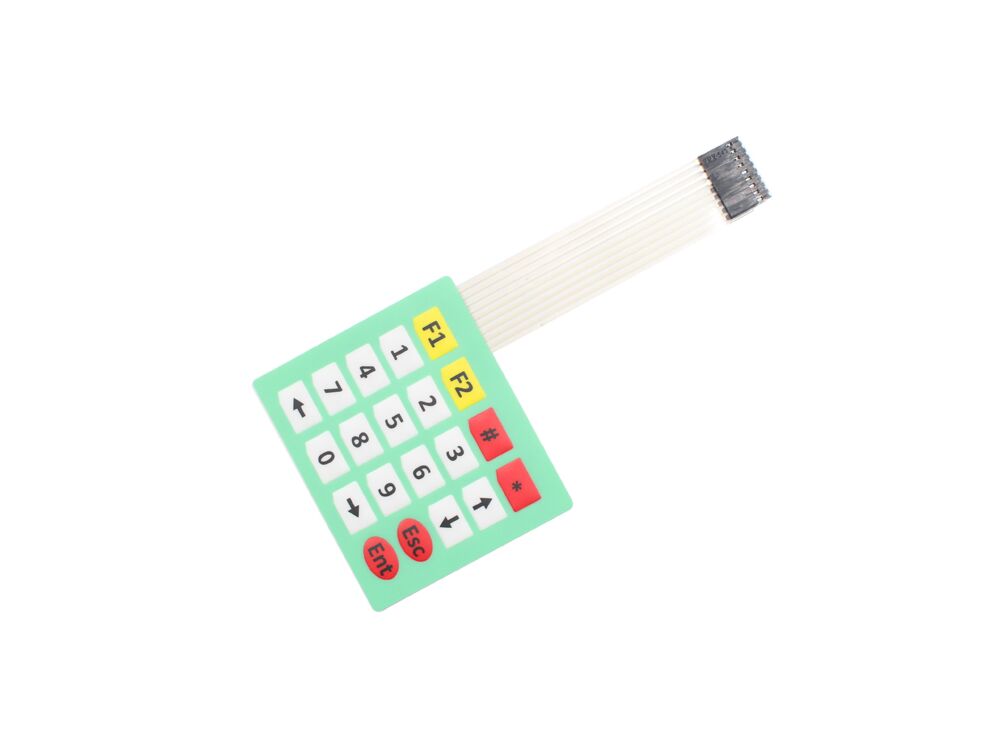Explore the Benefits of Using a Membrane Switch in Modern Devices
Explore the Benefits of Using a Membrane Switch in Modern Devices
Blog Article
Comprehending Membrane Layer Changes: The Trick to Long Lasting and Reputable Controls

What Are Membrane Layer Buttons?
Membrane layer switches are an advanced option in the world of interface technology, integrating capability and layout perfectly. These gadgets act as a user interface between users and electronic systems, integrating a number of elements right into a small format. Usually built from adaptable, slim layers of products, membrane layer buttons are made to react to touch, enabling customers to interact with machinery and electronic gadgets successfully.
The main elements of a membrane button consist of a published circuit layer, visuals overlay, and a spacer layer that stops unexpected activation. The visuals overlay can be personalized to show brand name identity or user preferences, enhancing aesthetic appeals while making sure use. Membrane layer buttons are frequently used in different applications, including clinical devices, consumer electronic devices, and commercial devices, owing to their sturdiness and resistance to environmental factors such as moisture and dirt.
Among the crucial advantages of membrane layer buttons is their ability to endure wear and tear, making them ideal for high-traffic settings. Furthermore, they are lightweight and call for marginal area, allowing for innovative layouts in product growth. On the whole, membrane layer changes stand for a functional and efficient option for modern digital user interfaces, marrying modern technology with user-centric design concepts.
Exactly How Membrane Layer Changes Job
The operation of membrane layer switches over hinges on an easy yet efficient device that translates user input right into digital signals. When a user presses the switch, the top layer warps, permitting a conductive element in the circuit layer to make contact with a matching conductive pad on the bottom of the visuals overlay.
The layout of membrane switches can vary, however they usually incorporate domes or tactile aspects to supply responses to the customer, enhancing the overall experience - membrane switch. The materials utilized in membrane switches, such as polyester or polycarbonate, add to their longevity and resistance to environmental factors, including moisture and dust. Additionally, the printed circuits are usually enveloped, which secures them from damage with time.
Benefits of Membrane Layer Buttons

In addition, membrane layer buttons are understood for their toughness. Constructed from durable products, they are immune to dust, wetness, and physical wear, which substantially prolongs their life-span compared to conventional mechanical switches. This toughness makes them specifically ideal for high-traffic settings and applications calling for long life.
An additional significant benefit is the ease of cleansing and upkeep. The smooth surface area of membrane layer switches over decreases dirt this link accumulation and is often unsusceptible spills, making them perfect for settings that require frequent sanitization.
Moreover, membrane buttons supply a structured account, causing a thinner style that can be integrated into numerous tools without including bulk. This feature not just boosts the aesthetic appeal but additionally adds to a much more ergonomic product design.
Applications of Membrane Layer Buttons
Straightforward and functional, membrane switches locate applications across a variety of sectors, including clinical gadgets, consumer electronic devices, and commercial equipment. In the clinical field, these switches are indispensable to gadgets such as diagnostic tools, client monitoring systems, and mixture pumps, where reliability and convenience of cleaning are crucial. Their capacity to stand up to harsh settings and preserve functionality makes them excellent for such applications.

In customer electronics, membrane layer buttons are utilized in items like microwaves, washing makers, and remotes - membrane switch. Their smooth design enables intuitive individual interfaces, boosting the overall individual experience while supplying resilience and resistance to damage
Commercial tools also takes advantage of membrane layer buttons, particularly in control panels for equipment and automation systems. These buttons offer protection against dirt and dampness, guaranteeing constant efficiency in tough environments. Their customizable functions enable manufacturers to tailor them to particular operational requirements, improving effectiveness and capability.
Picking the Right Membrane Layer Switch Over
When picking a membrane layer button, it is important to consider numerous factors that affect efficiency and viability for certain applications. The main considerations include environmental conditions, responsive responses, longevity, and layout specs.
First, examine the operating atmosphere; switches revealed to dampness, chemicals, or severe temperatures require details products to make sure durability and functionality. Next off, examine the requirement for tactile responses. Relying on individual interaction, some applications might profit from a tactile response to validate activation, while others may prefer a non-tactile layout for aesthetic reasons.
Longevity is one more crucial factor; membrane layer switches need to be created to endure frequent usage, impacts, and abrasion. Make certain the chosen switch can withstand the expected lifecycle, especially in high-usage scenarios.

Conclusion
In verdict, membrane layer changes function as crucial parts in the style of trusted and long site lasting control systems across numerous markets. Their small design, integrated with robust building and construction and adjustable features, boosts individual interaction while making sure durability sought after atmospheres. The flexibility of membrane layer changes permits tailored solutions that fulfill certain operational requirements, reinforcing their relevance in modern innovation. As sectors proceed to develop, the value of incorporating reliable membrane button options can not be overemphasized.
Membrane layer switches represent an essential aspect of modern interface style, mixing capability with resilience in various applications.Membrane buttons are an innovative solution in the realm of user interface innovation, integrating performance and layout this link seamlessly. Usually built from versatile, slim layers of products, membrane layer buttons are created to react to touch, enabling individuals to engage with equipment and digital gadgets successfully.
The style of membrane layer switches can differ, however they often incorporate domes or tactile elements to provide responses to the customer, improving the general experience.In final thought, membrane layer changes serve as important components in the layout of sturdy and trustworthy control systems throughout different markets.
Report this page